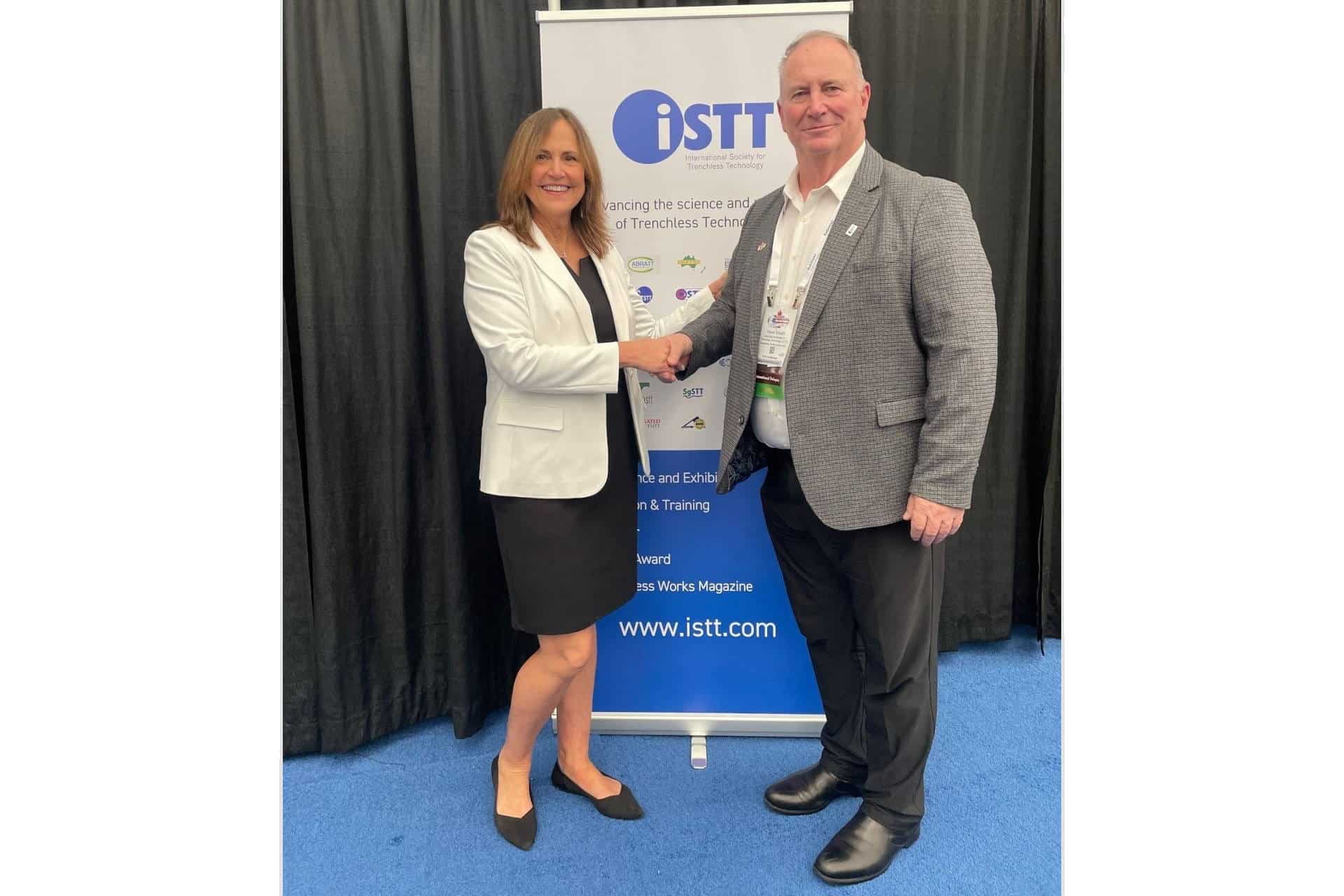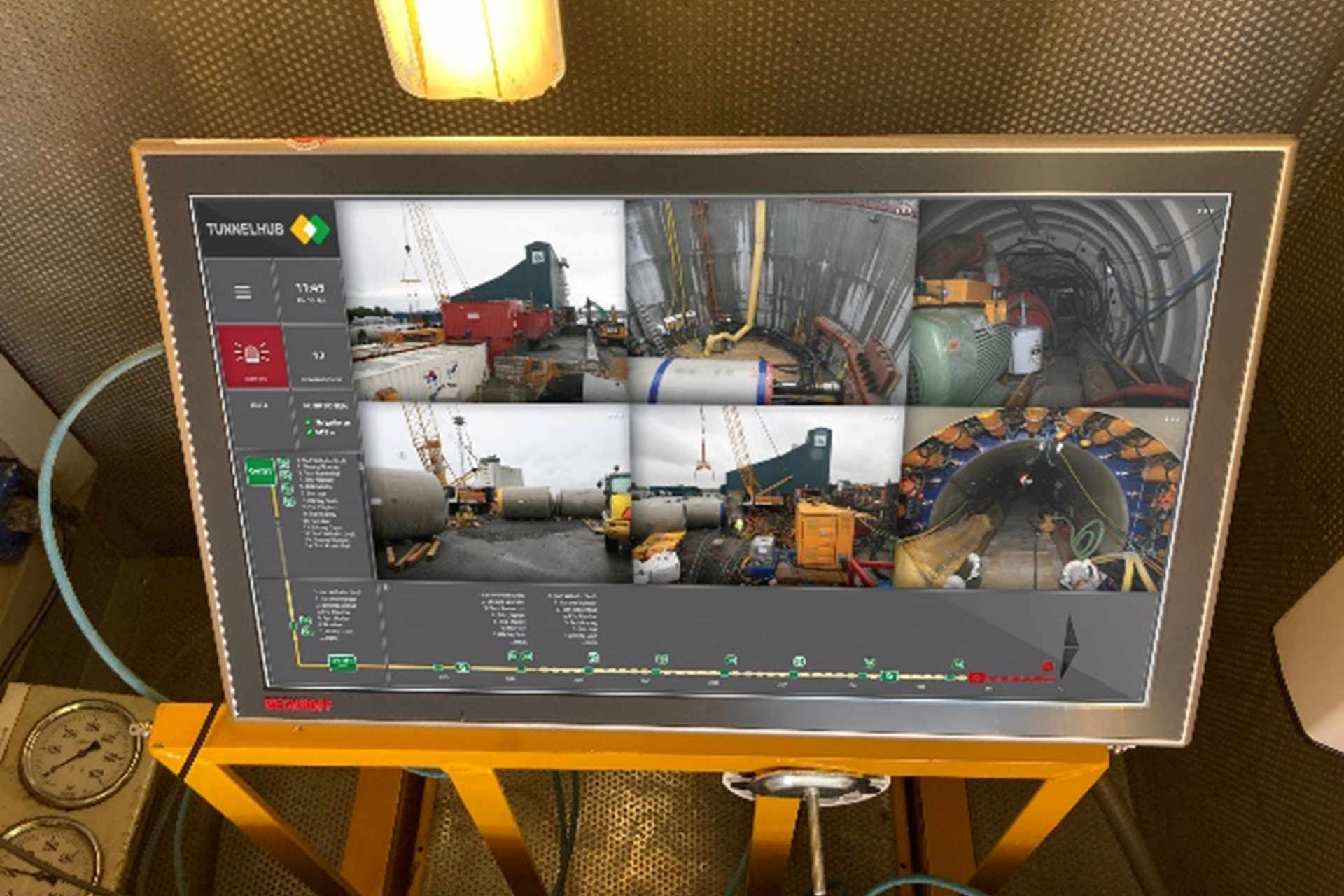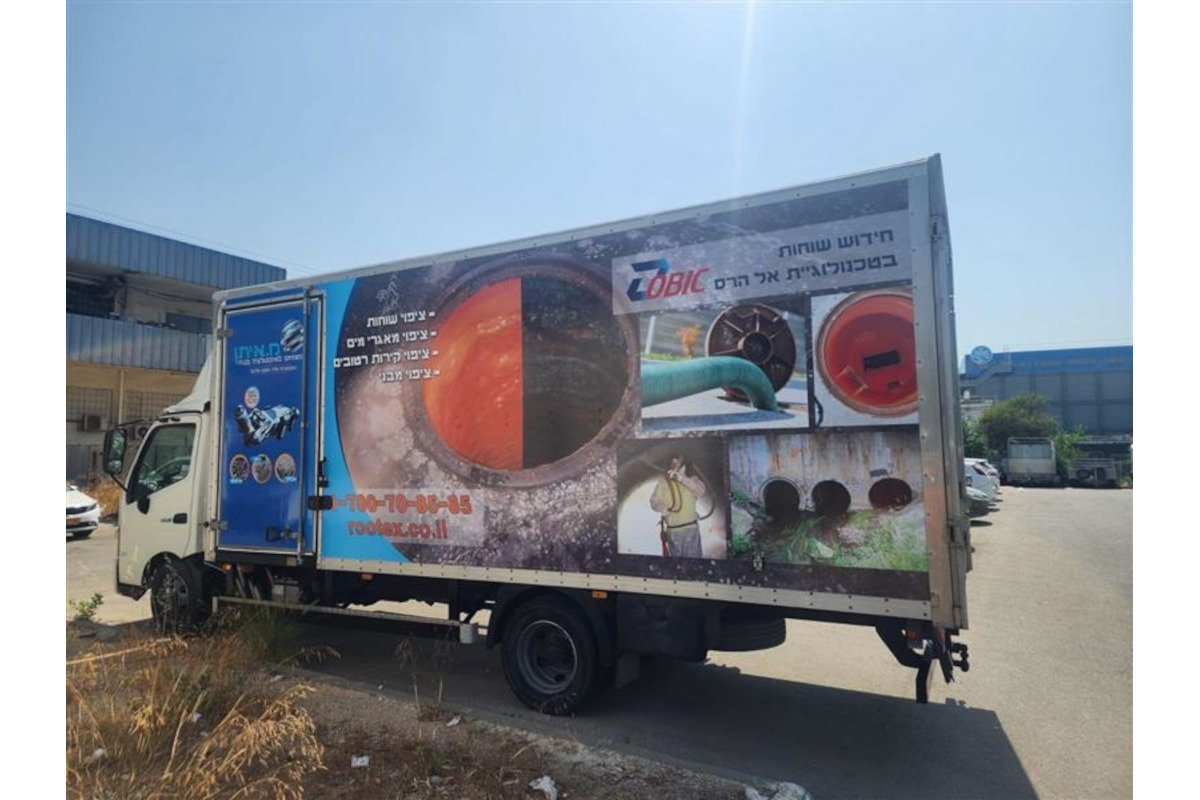ISTT Update
January 1, 2008
26th International No-Dig 2008 in Moscow, June 3-6
The call for papers to be presented at No-Dig 2008 closed just before the New Year, and peer review is now taking place. Authors will be informed at the end of February and the conference program will be announced shortly afterward. In practice, delegates are going to be spoiled for choice during this exciting week.
The ISTT and RSTT have decided to share the Crocus Exhibition Centre with the eighth ECWATECH 2008 “Water: Ecology and Technology” trade fair, which is well-established in the Moscow events diary and has an excellent track record for attracting exhibitors and visitors from the broad environmental business sector. In 2007, the fair had 656 exhibitors occupying 10,500 sq m of space and attracted nearly 10,000 visitors. No-Dig 2008 will also be alongside the third CityPipe Fair, which focuses on piping systems in municipal infrastructure including construction, diagnostics, repair and operation. CityPipe focuses on the particular problems faced in the Russian federation of operating and maintaining water and energy pipelines (many Russian cities have district heating systems) that are in transition from the public to private sector management and are facing the difficult issues of condition assessment, asset management and investment. Access to all three exhibitions is open to all visitors of the Crocus Centre during the week, so No-Dig expects a large number of Russian visitors from the prime target sector of the economy, which needs to be exposed to trenchless technology and its many advantages.
The No-Dig conference sessions will also be planned with an eye on the special needs of the Russian federation. “Trenchless Russian Style” and “Trenchless in a Cold Climate” will be targeted at Russian conference delegates to be given a fast track introduction to international experience in comparable situations. For international delegates, there will be sessions covering research and the increasingly important question of the carbon footprint, which is an increasingly important benefit of using trenchless in comparison to open-cut.
The statistics for the Russian federation show that the timing of this No-Dig is spot on — 144 million inhabitants, 17 million sq m in land area rich in natural resources and a GDP growing at the rate of 5 percent per year is attracting investment and financing from the private and pan-national institutions into the utilities sector. But the Russian federation has only a fledgling trenchless business sector keen to catch up with the global trenchless community.
The Web site for No-Dig Moscow 2008 is www.nodig2008.ru and SIBICO, the professional organizers, look forward to handling your queries and bookings at nodig2008@sibico.com.
The ISTT Program 2007
In the September/October and November/December 2006 issues of TTI, the “ISTT Update” pages carried reports of the intention, during 2007, for the ISTT to cooperate with national and regional event organizers to raise its international profile and to help with training and conference seminars. The first, TRENCHLESS Middle East, March 12-13, 2007, was reported in the May edition of TTI with 64 local delegates attending a two-day general training seminar in parallel with the exhibition by then ISTT chairman Dec Downey and technical secretary John Heavens. The second was a specialist training course, run by Downey, was held immediately after the NASTT No-Dig Show in San Diego, April 18-19, 2007. It focused on pressure pipe design and 26 delegates benefited from the latest knowledge and experience from around the world on this increasingly important topic.
The final course, “New Developments in Trenchless Technology,” was conducted by ISTT vice chairman Sam Ariaratnam and Downey to coincide with “Trenchless Technologies: Asia Pacific,” Macau 2007. To make the course more accessible to delegates from Hong Kong, it was held on the island Nov. 7, the day before the Macau event, and 50 delegates attended. The course was kindly sponsored by Insituform Inc. and was attended by groups from the Water Supply Department and Hong Kong & China Gas. The next day, the Hong Kong Society Macau attracted 120 delegates, who enjoyed a broader program of papers and a small accompanying exhibition.
Overall, the 2007 ISTT program has been a resounding success. The Society has received some welcomed additional income but, more important, the ISTT chairman and vice chairman have been able to meet face to face with a good cross section of the trenchless community to spread the message about the value of international community and an indication of the depth of expertise available within that community and through the Trenchless Resource Centre.
The program will be repeated in 2008 and should any society want to include the program to its event, the society should contact ISTT.
Ninth Jornada International De Technologia Sin Zanja
The ninth Jornada, organized by the Iberian Society was held in Madrid, Spain, on Nov. 22, 2007. The ISTT was represented by the chairman Dec Downey, who addressed the delegates at the start of the day’s program of 12 presentations by members of the Iberian Society. Spain, with its favorable weather throughout the year, is facing difficulties supplying water and dealing with wastewater from the increasing numbers of the tourists and those choosing to retire in the southern coastline region. Although the problem is principally finding supplies, the need to increase the size of the networks and their capacities is creating a demand for trenchless skills and expertise. After the meeting, Downey offered support to IBSTT chairman Alfredo Avello y Prendes for the 10th Jornada, pointing out that training courses in Spanish had been developed by the North American Society in response to the number of Spanish-speaking operatives now working in the southern region of the United States.
Romanian Maintenance
Services Seminar
At the invitation of a major trenchless service provider in Romania, Dec Downey was asked to address a seminar held in Constanta, Romania. This event included the mayors of the 50 largest cities in the country on the environmental and cost benefits of trenchless technology. After the seminar, Downey had a meeting with president-vice-secretary of state Dr. Mihai Toti, Ministry of Environment and Sustainable Development, followed by an interview on state television. There is an increasing interest and cooperation among the countries on the western shores of the Black Sea, that share a concern over pollution of the sea by raw sewerage and increasing problems with water supplies. The ISTT is encouraging the countries in the region to share their concerns and increase cooperation.
No-Dig Awards 2008
The closing date for entries for this year is March 7, 2008. Details of how to enter are on the ISTT Web site at www.istt.com and the winning submissions for 2007 have been posted as part of the award package.
Obituary- Col. Jon Sutro
It is with great sadness that ISTT has heard that Colonel Jon Sutro, former executive secretary of ISTT, died peacefully on Dec. 5.
For readers new to the trenchless industry, this name may be unfamiliar. But for those who have been involved with the industry throughout the early years following the formation of ISTT in 1986, Jon’s name will be well known and fondly remembered.
Born in 1929, in Hastings, New Zealand, Jon spent most of his working life in the British Army, initially with the 4th Hussars and later with the Queens Royal Irish Hussars. His duties led him to service in Malaysia during the ‘Emergency’ just after World War II. He was awarded the Military Cross for bravery during an ambush in 1948. After leaving the regiment in 1984, Jon worked for the Ministry of Defense in the Protocol Office. During this period, he was awarded the OBE. He retired from the Service in 1984 at the age of 55 with the rank of Colonel.
Subsequent to leaving the Service, Jon was appointed executive secretary of the ISTT on Oct. 10, 1988. He was instrumental in the work that was needed to continue the formation of the Society on a sound administrative and financial basis and he managed the rapid expansion of the membership which reached 2,200 by 1990. Jon then administered the process of handing back the day-to-day administration of these members, which had been centralized in London, to their newly formed National Societies which transformed the ISTT into the global organization we see today, with some 21 affiliated national societies and nearly 3,000 members.
Jon was the ideal man for the task. He had enormous integrity and was respected for the caring and considerate way he dealt with the members from the many different nationalities and cultures covered by the Society. He was a man of his word, giving freely of his time and support, so that he played a significant role in the negotiations with various national and international bodies and individuals that led to the formation of 16 national societies during his term of office.
Jon also had a major role in establishing the International No-Dig as the main global event each year for trenchless technologists. It was on this sound foundation that the ISTT has been able to increase in size and cope with the significant changes in business practices and communications that have occurred since the start of the millennium. In the history of civil engineering and the growth of trenchless technology as a discipline in its own right, the contribution which Jon made to this growth is very significant.
Jon finally retired to his home in Buckinghamshire in June 1998, to satisfy his love of the countryside and field sports, which he continued to enjoy right up to his peaceful death.
According to sources at ISTT, tributes have been received from all over the world and condolences are offered to Jane, Jon’s wife of 51 years, and to his family.




